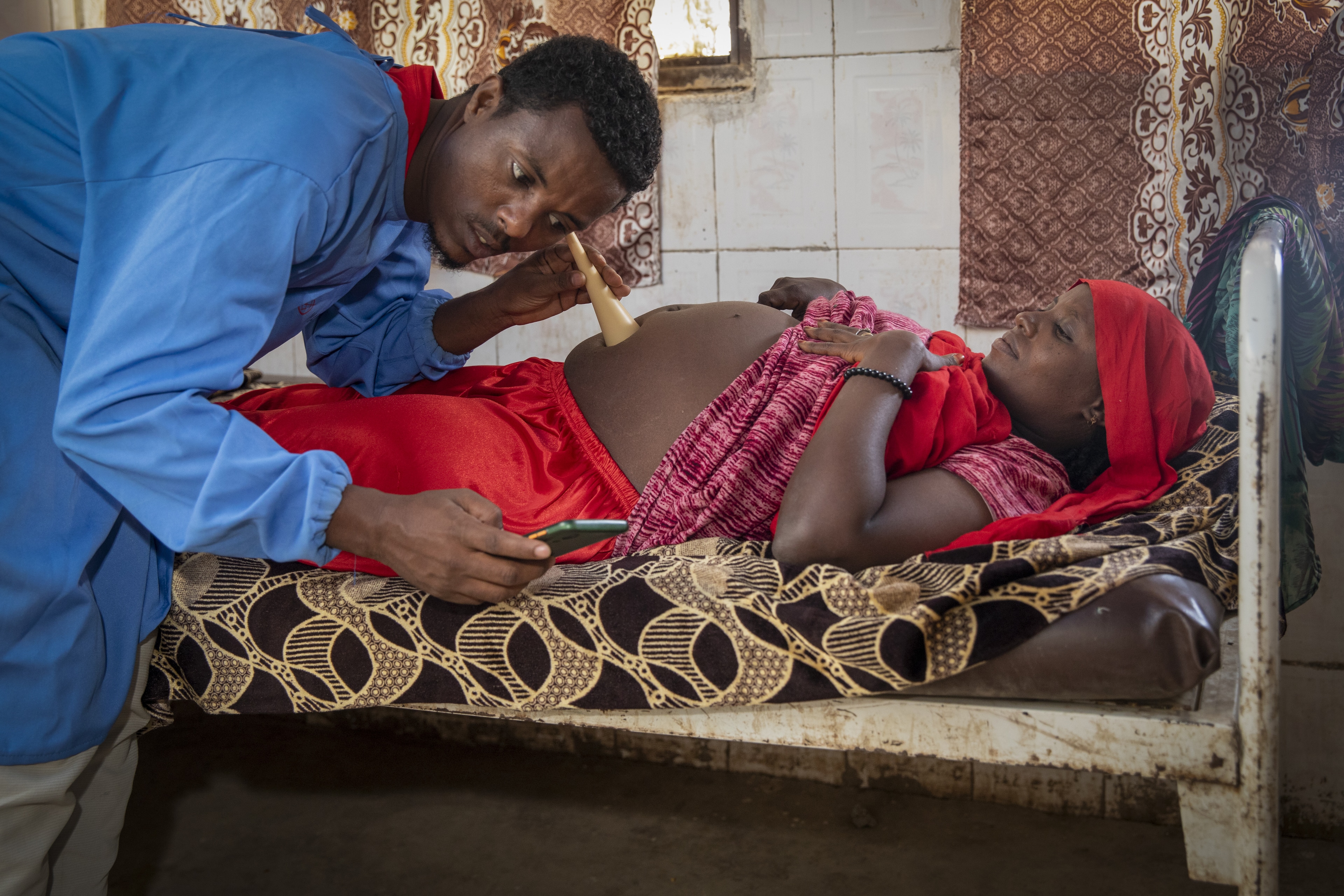Your smartwatch could detect early Parkinson’s signs

Digital devices are able to detect some signs of Parkinson’s disease. Image: Unsplash/lukechesser

Get involved with our crowdsourced digital platform to deliver impact at scale
Stay up to date:
Global Health
- A new study says that commercially available smartwatches can detect important signs of early, untreated Parkinson’s disease.
- Apps such as mPower can accurately track the severity of the symptoms of Parkinson’s disease, such as stiffness in the arms and legs, movement and walking difficulties, and tremors.
- Digital devices can differentiate between people with and without early Parkinson’s and are more sensitive than traditional rating scales for some measures of Parkinson’s disease, the study's author says.
Commercially available smartwatches and phones can capture key features of early, untreated Parkinson’s disease, according to a new study.
These technologies could provide researchers with more objective and continuous ways to measure the disease and bring new treatments to market faster, particularly for patients in the early stages of the disease.
“This research shows that readily accessible and ubiquitous technology has the potential to detect and objectively measure severity and potentially progression of important symptoms of Parkinson’s disease,” says Jamie Adams, a neurologist at the University of Rochester Medical Center, and first author of the study in npj Parkinson’s Disease.
While Parkinson’s is the world’s fastest growing brain disease, most of the drugs used to treat it were developed in the last century. The complexity of the disease and limitation of current measures have been barriers to new therapies.
Onset and severity of symptoms—such as stiffness in the arms and legs, movement and walking difficulty, and tremors—and progression of the disease can vary significantly from patient to patient.
Furthermore, the tools traditionally used to track the disease are subjective and episodic, e.g. only collected during visits to the clinic, limiting insight into how Parkinson’s disease affects people’s daily lives.
In 2015, URMC neurologist Ray Dorsey and the URMC Center for Health + Technology (CHeT) team collaborated with Sage Bionetworks to launch the first smartphone research application to monitor Parkinson’s disease in real time.
Apple featured the app, called mPower, during their semi-annual product launch event, and 15,000 individuals participated in research using the application. Studies have shown that mPower and another Android app can accurately track the severity of the symptoms of Parkinson’s disease. Dorsey is senior author of the new smartwatch study.
Since the launch of mPower, the proliferation of smartwatches and technological improvements, particularly in gyroscopes and accelerometers that can more precisely measure movement, has heightened the research potential of these devices.
In the new WATCH-PD study, researchers at multiple sites across the United States recruited 82 individuals with early, untreated Parkinson’s and 50 age-matched controls and followed them for 12 months.
The study volunteers wore research-grade sensors, an Apple Watch, and an iPhone while performing standardized assessments in clinic. At home, participants wore the smartwatch for seven days after each clinic visit and completed motor, speech, and cognitive tasks on the smartphone every other week.
The smartphone app tracked finger-taping speed, performance on cognitive tasks, and speech, while the smartwatch was able to measure arm movement, duration of tremors, and gait features.
What is the World Economic Forum doing to improve healthcare systems?
The researchers were able to detect motor and non-motor features that differed between individuals with early Parkinson’s and age-matched controls. The team performing longitudinal analysis and also conducting a study that will follow participants for a longer period to determine which digital measures are sensitive enough to help researchers evaluate whether an experimental therapy is making a meaningful impact on the progression of the disease.
“These findings reinforce what other studies have shown—digital devices can differentiate between people with and without early Parkinson’s and are more sensitive than traditional rating scales for some measures of Parkinson’s disease,” says Adams.
For example, the researchers note that the smartphone app detected abnormalities in speech rated “normal” by investigators. “Better measures will lead to more efficient, patient-centric, and timely evaluation of therapies.”
Additional coauthors are from Harvard Medical School, the Bill and Melinda Gates Foundation, Takeda Pharmaceuticals, Invariant Research Limited, AbbVie Pharmaceuticals, Clinical Ink, and the University of Rochester Medical School.
Biogen, Takeda, and members of the Critical Path for Parkinson’s Consortium 3DT Initiative funded the work.
Don't miss any update on this topic
Create a free account and access your personalized content collection with our latest publications and analyses.
License and Republishing
World Economic Forum articles may be republished in accordance with the Creative Commons Attribution-NonCommercial-NoDerivatives 4.0 International Public License, and in accordance with our Terms of Use.
The views expressed in this article are those of the author alone and not the World Economic Forum.
The Agenda Weekly
A weekly update of the most important issues driving the global agenda
You can unsubscribe at any time using the link in our emails. For more details, review our privacy policy.
More on Health and Healthcare SystemsSee all
Dame Sally Davies, Hemant Ahlawat and Shyam Bishen
May 16, 2024
Michael Anderson, Gunnar Ljungqvist and Victoria Saint
May 15, 2024
Charlotte Edmond
May 14, 2024
Shyam Bishen
May 13, 2024
Anna Cecilia Frellsen
May 9, 2024
Angeli Mehta
May 8, 2024






